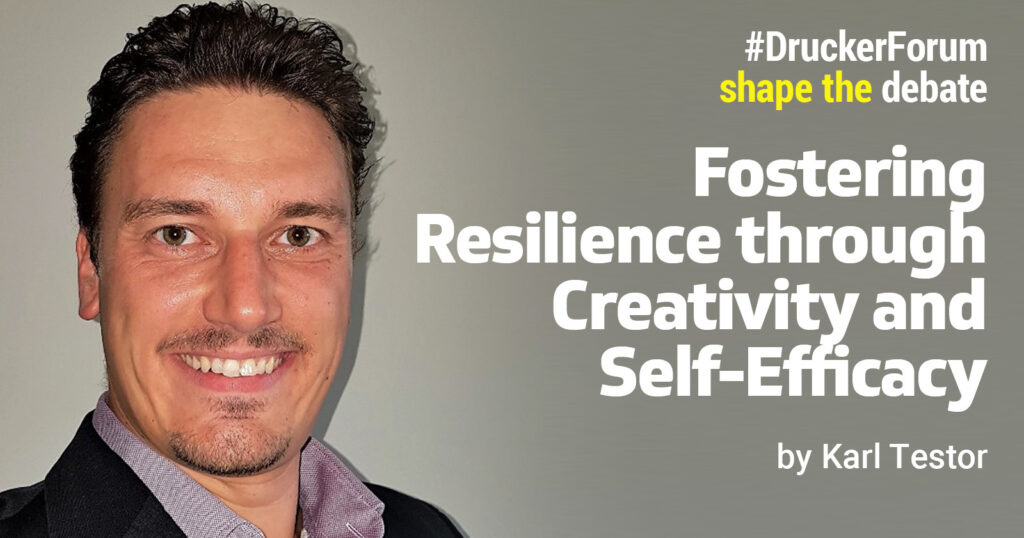
We like stories about people going through rough times, and rising like phoenixes from the ashes, having faced their nemesis and grown as people. We see ourselves in this, given that we have our own calamities and we recognise that life is neither easy no black and white. The question surely is how do these people succeed? Is it through excellence or some resilience?
Is resilience misunderstood?
Facing existential threats, some people become depressed whilst others seem to be affected almost positively. These people appear to stay true to themselves and they are what we would call resilient. We implicitly think of them as strong enough to withstand impacts and therefore we are unconsciously referencing Darwin ‘s theory of the fittest. But we misunderstand that. The fittest doesn’t mean the strongest or the biggest, but it means the most adaptable. Being able to change with your environment enables you to evolve and survive. Resilience in this case is not about strength but about adaptability.
Self-Efficacy – foundation of resilience and creativity
Albert Bandura defined self-efficacy as a person’s belief in their capabilities successfully perform a particular task. This depends on the situation itself. And hence your belief in your abilities. You might walk along a plank laid on the ground, but baulk at the same plank suspended between two skyscrapers. This slight change of situation, even if it was a virtual reality situation, raises the individual’s alertness and their perception of their own abilities changes. Now they are no longer so certain. This level of alertness is closely linked with performance. The relationship between the two creates a bell curve which describes low performance when an individual is overly excited or bored. This gives us a hint as to where better performance can be found. Certainly not in a highly stressful situation.
Yet the typical corporate environment has time pressures, a constant need to boost efficiency, issues with satisfying external stakeholders and possibly some internal competitive pressures as well. These all create tense and stressful environments where performance can be impacted. Surviving here you must be able as an individual to be resilient and developing an advanced skill set capable of negotiating these various competing pressures becomes an essential. Self-efficacy is the key element here. Trusting in oneself, new and creative solutions will be found. None of which actually helps the organisation as a whole. The individual’s objectives, working there, are not aligned with the organisation’s.
Organisations are built up of individuals. All the individuals in an organisation who perform in this way create an organisation which has similar characteristics. That might be overly pressured and counterproductive. But it may be a way of creating some adaptability and self-efficacy if the organisation adapts itself to embrace the positives.
Enhancing creativity
If we accept that resilience is based on adaptability, then what will make people and therefore organisations create positive adaptations? Effectively, we are exploring the idea that to create the evolution that organisations need to survive requires creativity.
Creativity is a skill which can be learned, just like any other. There are simple techniques to assist this such as mind mapping, and changing routines to change mindsets. An organisation needs to create an environment where creativity can occur. This is a cultural issue. Steve Denning’s blog on Tesla’s management style helps us here. He describes the integration of mission, goal and workplace such that everybody has common objectives and the ability to influence the company’s direction. This shows a way of finding paths and opportunities instead of burdens and obstacles.
Positive leadership of this sort highlights curiosity, playfulness and open mindedness but can only do so by leading by example. No top down tablets of stone. Even if leaders are not themselves particularly creative, they can still foster a culture that allows creativity in a psychologically safe space so that people will be comfortable bringing forward new ideas.
The other element that is essential is the importance of pause. People have to have time to think and be measured on their output as well as their impact not on their effort. As we move more and more towards knowledge and judgement work, people need to be allowed to spend their working time in thinking about problems rather than looking busy. The tempo of work, if it is too high, can destroy this. There needs to be focused time without interruptions and too many concurrent tasks.
What next?
Given that resilience is defined by adaptability rather than fitness or excellence, then it is to our leaders that we need to look to provide an environment that encourages individual growth and self-efficacy and so the space and opportunity to stimulate creativity. Creativity shouldn’t be an element of luck but of curation and planning.
About the Author:
Karl Testor is a Leadership Expert and Neurocognitive Scientist. His passion is to inspire leaders and create extraordinary environments together, in which people and organizations can flourish and grow beyond their boundaries. https://i-n-f-international.com/

